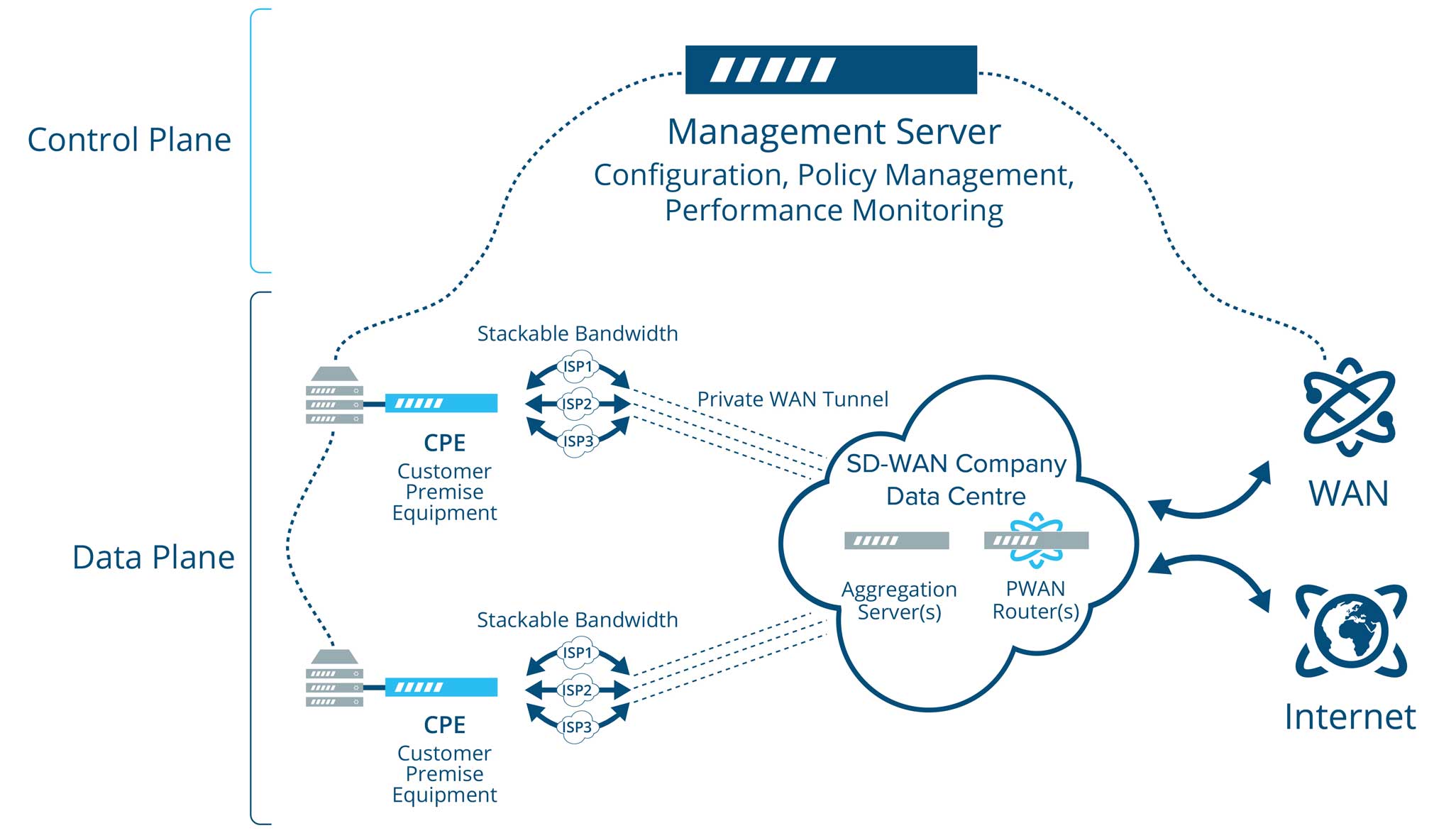How it works
Our system was designed to give you remote access to each device in your network making truck-rolls a thing of the past. By abstracting the control plane from the data plane, we give you a unique ability to make oft-needed changes to network configurations remotely. Deploy new sites, change policies, add WAN links – all in seconds.

The Nodes
The system is comprised of just four node types. Some allow for creating a more meshed topology, others perform certain required functions – like Bonding, Fast-Failover, Traffic Encryption, and Quality of Service.




Bonder(s)
This device sits at each client site. It sends and receives traffic over multiple circuits.
Aggregation Server(s)
A core server that combines a customer’s outgoing traffic from each circuit and splits incoming traffic down each circuit.
PWAN Router(s)
A core device that allows geographically separated sites to securely route traffic to each other as if each site was connected to the same router.
Management Server
The web interface where a collection of circuits, connected IPs, CPE NAT IPs, routes, and other settings are configured and monitored.
How it works
Traffic leaving your customer’s site
The Bonder receives and disassembles the traffic from a LAN node. It then distributes the individual packets across the WAN connections based on rules and policies that have been set in the Management Server. The traffic packets are re-ordered at the Aggregation Server before being sent to the destination host.
Traffic going to your customer’s site
The Aggregation Server broadcasts your customers’ IP address(es) and receives all of its traffic. It then disassembles the traffic into packets and sprays those packets across the multiple WAN links – applying customer/ application/class-specific prioritisation, cryptography, and/or routing rules. At the customer’s site, the Bonder receives the packets and re-orders them before sending them into the LAN and to the recipient node.
Technical Details
The technology uses a packet-level distribution algorithm to effectively control WAN paths. The service encapsulates multiple WAN connections into a proprietary, over-the-top protocol that routes traffic over the Internet.
Decisions about traffic shaping, prioritisation and balancing are made through a Cloud-based management server that monitors the health of your WAN connections – the control plane. This device then sends traffic-handling information to each of the devices in the network, so that each node knows what it needs to do to ensure the customer experience is optimised.
What are you waiting for?
Get in touch so you can be blown away by the power of SD-WAN.
